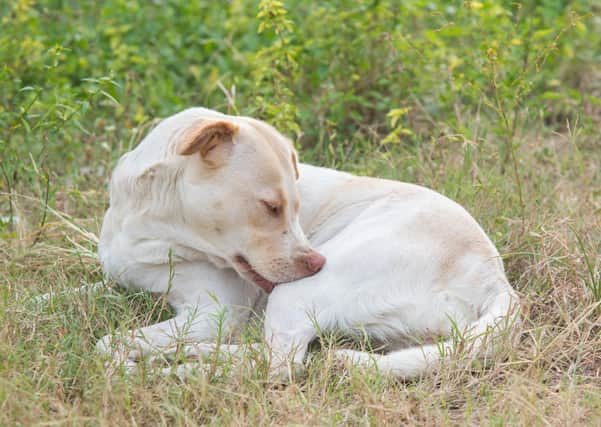Perfect Pooches: Seasonal allergies in dogs and how to help deal with them


My two small dogs usually start at this time of year with seasonal allergies. We haven’t quite worked out what they’re allergic to, but it’s definitely a spring/summer allergy.
Does your dog suffer? Do you know what to look for? How can you help?
Advertisement
Hide AdAdvertisement
Hide AdYour dog may become itchier than normal and may bite, lick, chew, rub or nibble at their skin and paws.
Many people will believe their dog has picked up parasites, like worms or fleas, and then treat the dog for these problems.
As, I’m sure you’ve all realised now, I don’t like to give my dogs too many chemicals, I try to keep their life as natural as possible in that respect. So, if you see your dog begin scratching, nibbling their skin etc… check them over for fleas. I’m going to go into more detail about fleas and worms next time, but, for now we can assume the dog doesn’t have any parasites and the itching is caused by an allergy. You sometimes see their back leg scratching thin air when you stroke them, or that they have nibble their skin.
If you suspect that your dog has begun to suffer with allergies, and this can happen at any time during their lives, firstly, have this confirmed by your vet, they will recommend an anti-histamine and a safe dosage for your dog.
Advertisement
Hide AdAdvertisement
Hide AdThere are also natural treatments available, like ‘Stinky Stuff’, which can be used both internally and externally. It works well for my dogs.
There’s a bit of trial an error when finding a solution, and I don’t think there is anything that will truly remove an allergy completely, but if we can improve our dogs’ life during these summer months it’ll be worth it.
Keep your dogs’ fur short, I know this isn’t possible for all breeds, but for those it is, it will help prevent the trapping of dust, grass seeds or pollen. Also, try to walk them at certain times of day when there is less pollen around, eg early mornings and/or evenings
If your dog has a grass allergy, then avoid walking them on grass during the months the pollen count is high, or, if you do, make sure to brush or rinse off any grass pollen on your return from the walk.
Advertisement
Hide AdAdvertisement
Hide AdTry to work out which pollens your dog is allergic to, trees, shrubs, flowers, grasses etc. Do this by keeping a log of your dogs’ symptoms and behaviours, you never know, you could have a certain shrub in your garden which is causing the problem.
Check the local weather reports for the pollen count each day, if the weather is warm and dry this is usually when the pollen is at its highest so its wise to keep your dog indoors in a cool space with the windows and doors closed.
Comment Guidelines
National World encourages reader discussion on our stories. User feedback, insights and back-and-forth exchanges add a rich layer of context to reporting. Please review our Community Guidelines before commenting.